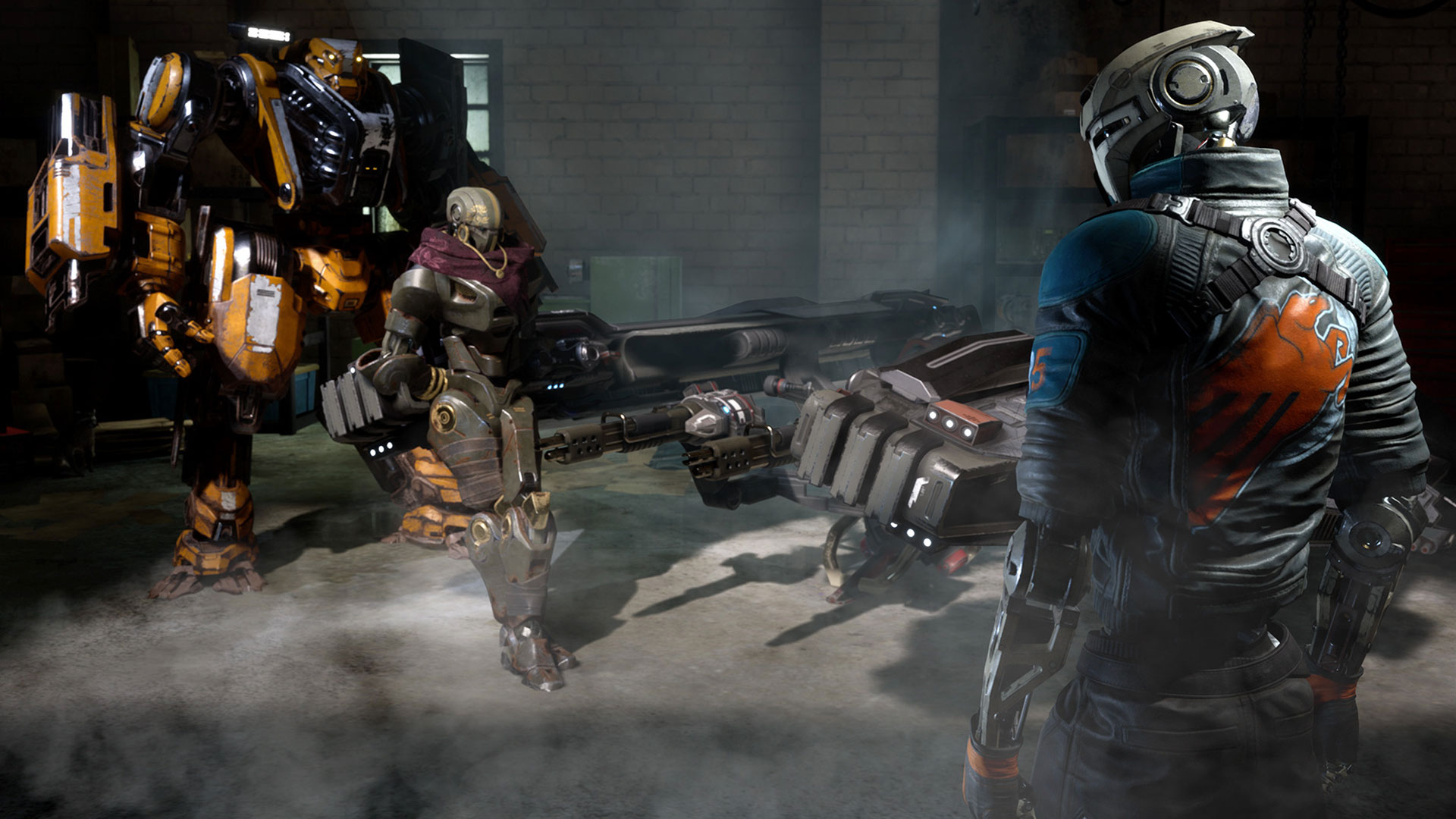
It's both a cliche and an understatement, but I'm going to say it anyway: making video games sounds hard. It's the process of multiple artistic, engineering, and technical proficiencies converging against an array of immovable deadlines and resource restrictions. The fact that any game, regardless of how it is ultimately received, is able to make it from conception to completion is kind of incredible.
I first played Disintegration back in August 2019, when Bungie alumni Marcus Lehto, alongside a handful of other creatives from V1 Interactive, revealed its passion project to the world. A first-person shooter, albeit in a configuration that I'd never seen before. This brand new team was trying to figure out an all-new idea, blurring the lines between FPS and RTS – shooting assigned to your right hand and tactics to the left.
Lehto has had a fascinating career in the industry. Art director on Halo: Combat Evolved, Halo 2, and Halo 3 – co-creator of one of gaming's most iconic figures, Master Chief – and creative director of Halo: Reach. He was there in the early years of Bungie's independence, was there for the split from Microsoft, and helped the team to figure out the earliest iterations of Destiny, before ultimately deciding to explore new opportunities at a far smaller scale.
Regardless of how Disintegration ultimately turned out, I knew that when the time came, it would be worth digging into the origins of this ambitious and unconventional shooter. I spoke to Marcus in that somewhat awkward period of time between a game going gold and review copies landing in the inbox of press around the globe. So while we weren't able to dig into the somewhat divisive reception Disintegration has received ahead of its launch, we did cover the project's earliest days and what it's like to go from creating games at one of the biggest AAA studios in the world to a small, independent startup.
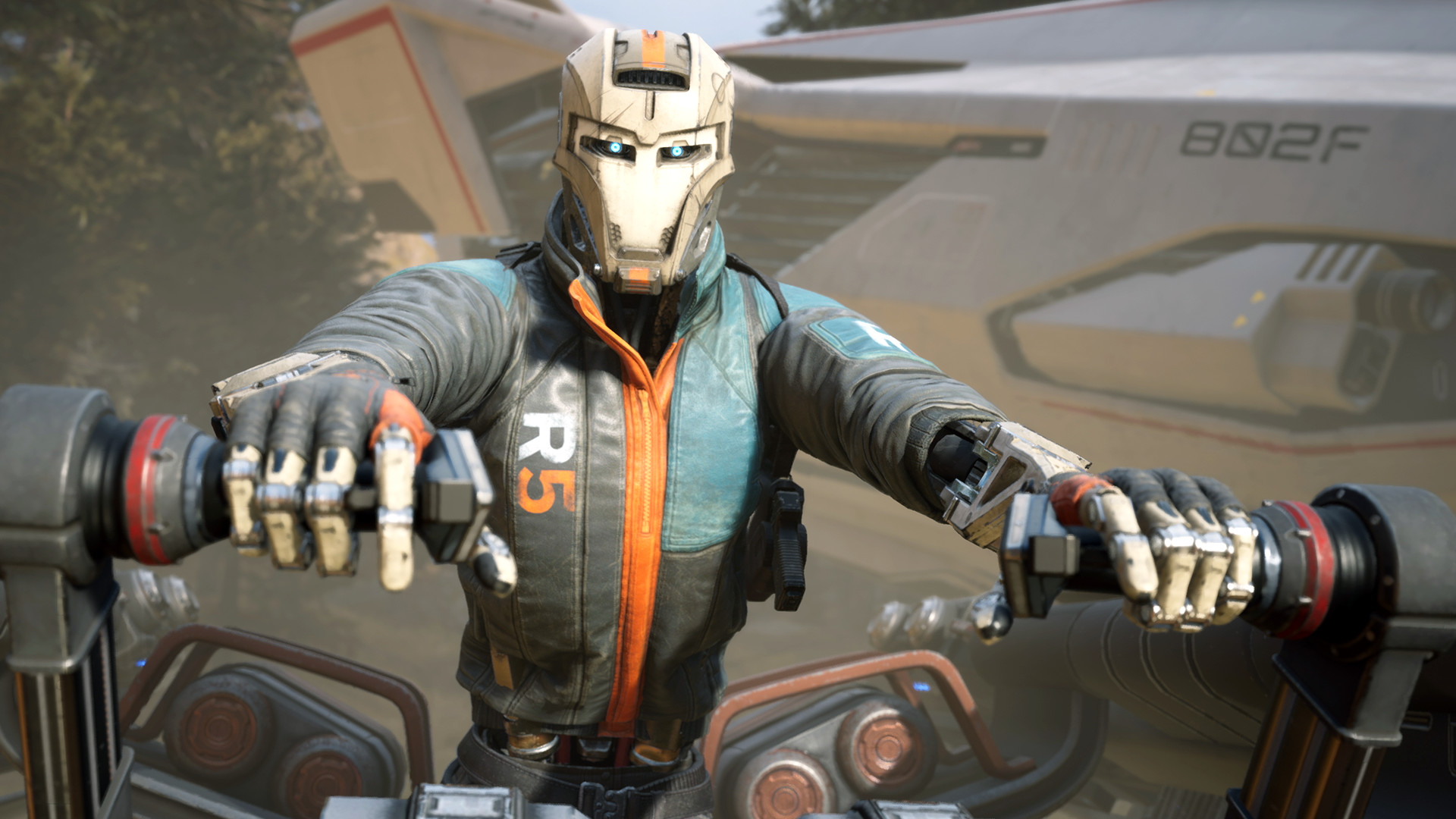
GamesRadar: What was it like to make that journey from Bungie in 2012 to forming V1 Interactive in 2014?
Marcus Lehto: It was simultaneously exciting and terrifying. Because, on top of everything, I was leaving a family of 400 to 500 people at Bungie. There was a camaraderie there, and leaving that behind to start something brand new was a very scary endeavour. Not just because I was leaving all of that support structure behind, but I had to have faith in myself that I could do this – and I really didn't know for sure! It was also going to take a lot of people feeling the same way about me with regards to taking that first step.
Speaking of that first step, what were the early days of the studio like?
Weekly digests, tales from the communities you love, and more
Marcus Lehto: The first couple of engineers we hired were still in school. At that time, we were just starting to build the foundations of V1 Interactive and the very first prototypes of the game. I figured, let's take our time. Let's build something that we could actually showcase to a publisher and start pitching around in a way that it wouldn't be a bunch of smoke and mirrors – PowerPoint presentations of 'Here's what we really want to do.'
No, we actually wanted to build something. We took our time with it, and, honestly, it was a fantastic time for me. I was still exploring what we were going to do, and whether we were even going to build a whole studio or not.
What alternatives were you considering?
Marcus Lehto: At one point, we thought we were going to do a Kickstarter-funded campaign and that [V1's first project] was going to be a free-to-play mobile game… we explored all kinds of different ideas. That journey took some surprising turns for us; the initial intent was to just be a five to eight-person team building very, very small indie games.
But we got so excited about what we were building. We started pitching that [prototype] around to some of our friends, who happened to work with some publishers. Eventually we were like, 'Hey, this might actually be something more than what we had initially envisioned, in a way that I think everyone can get behind and believe in us.'
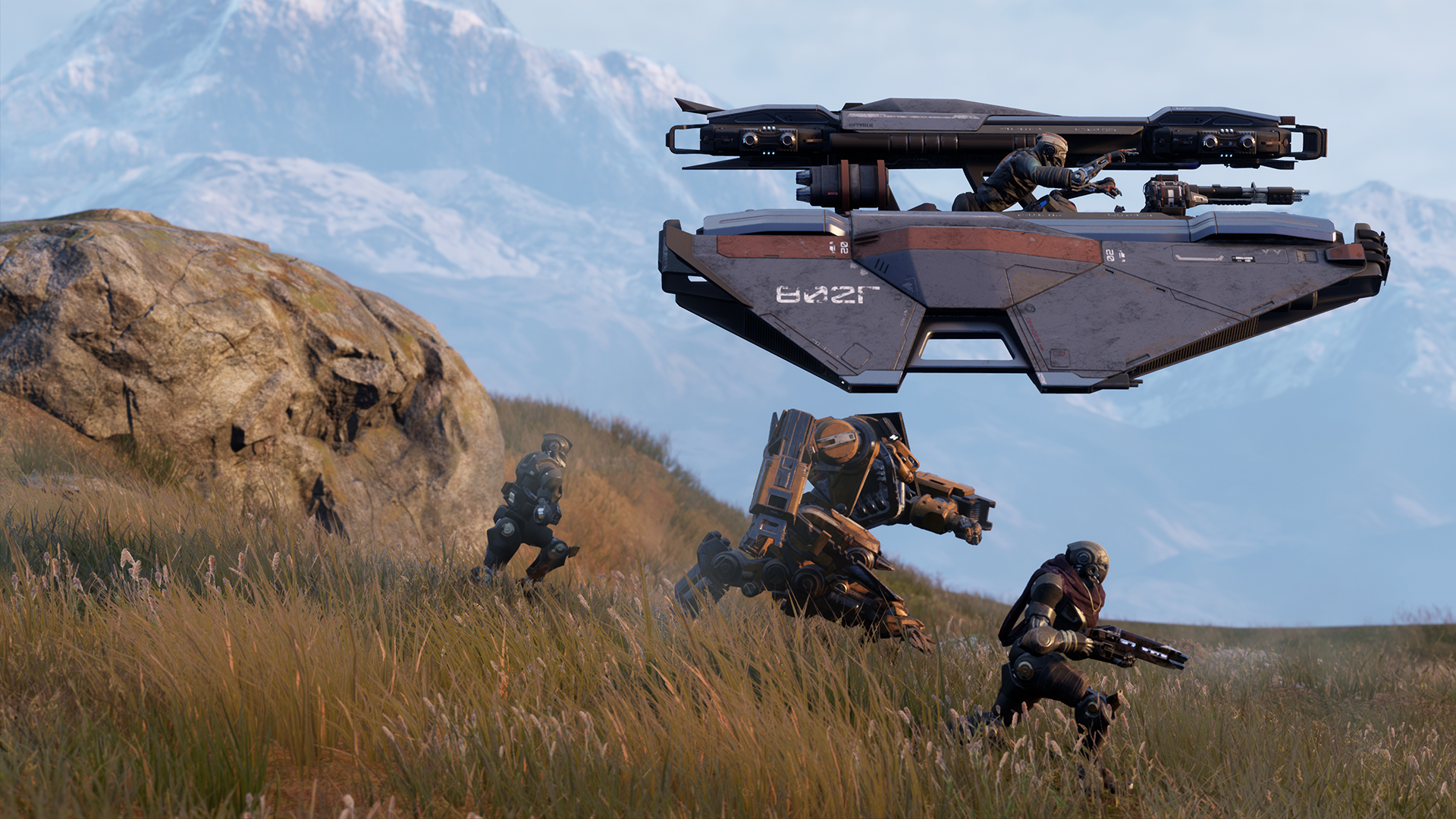
"At the time, it was just three of us; myself and two students who still hadn't graduated"
V1 ultimately ended up signing a deal with Private Division, what was the make-up of the studio like by the time they agreed to publish the studio's debut game?
Marcus Lehto: We took a leap, and so did Private Division. They took a leap in believing that I could build a studio. At the time, it was just three of us; myself and two students who still hadn't graduated. They took that leap and said, 'We believe that you, Marcus, are going to be able to hire on a full studio, build a full single-player campaign, in addition to a multiplayer component, and do all of this in about three years with about 30 people.'
I remember thinking, 'Well, I'm either absolutely insane or this is really going to happen!' [Laughs]
Disintegration isn't your typical first-person action game. What was it like selling the idea to Private Division?
Marcus Lehto: I remember when we went through what is called the greenlight phase, where we flew out to New York and presented a full prototype to all the corporate guys at Private Division. We were sweating bullets the whole time.
Typically, they have about two days to consume what they saw, think about it, and consider whether they wanted to move forward or not with the project. So we went back to our hotels thinking it was going to take two days. We were sitting at a bar, having a drink, trying to relax, and I get a call from my good friend Allen [Murray], who was the executive producer at the Seattle branch of Private Division... two hours is all it took, they accepted it!
I think that was one of my proudest moments of the game's development. When we knew that there was something genuinely exciting about the game that didn't just get us excited, but it was exciting enough to get another group of people to take that leap of faith in continuing to fund us through to where we are today.
The last game that you shipped was Halo Reach. Amazingly, the Internet tells me it was 10 years ago – which doesn't seem right to me...
Marcus Lehto: Yeah... it doesn't seem that long ago! [Laughs]
I know, I can hardly believe it either! What's it like to go from creating games in a huge studio environment to a team that's a fraction of the size?
Marcus Lehto: Honestly, it's a lot easier with a small team. The smaller the team is, the easier it is to pivot on ideas, to retain consensus, and to get people excited about [an idea] and really invested in it.
The larger that team gets – it's just by nature – you're going to have people wanting to take the game in 100 different directions simultaneously. And that can be very difficult; after Bungie bought itself back [from Microsoft, 2007], when we were trying to get Destiny off the ground, that was a real chore with such a huge team.
It wasn't impossible by any means, but it's just a lot more challenging. By having that small team, everybody is on the same path together, it makes so many things easier. I think that's one more reason why I was so excited to leave Bungie and start V1, so that we could have that team.
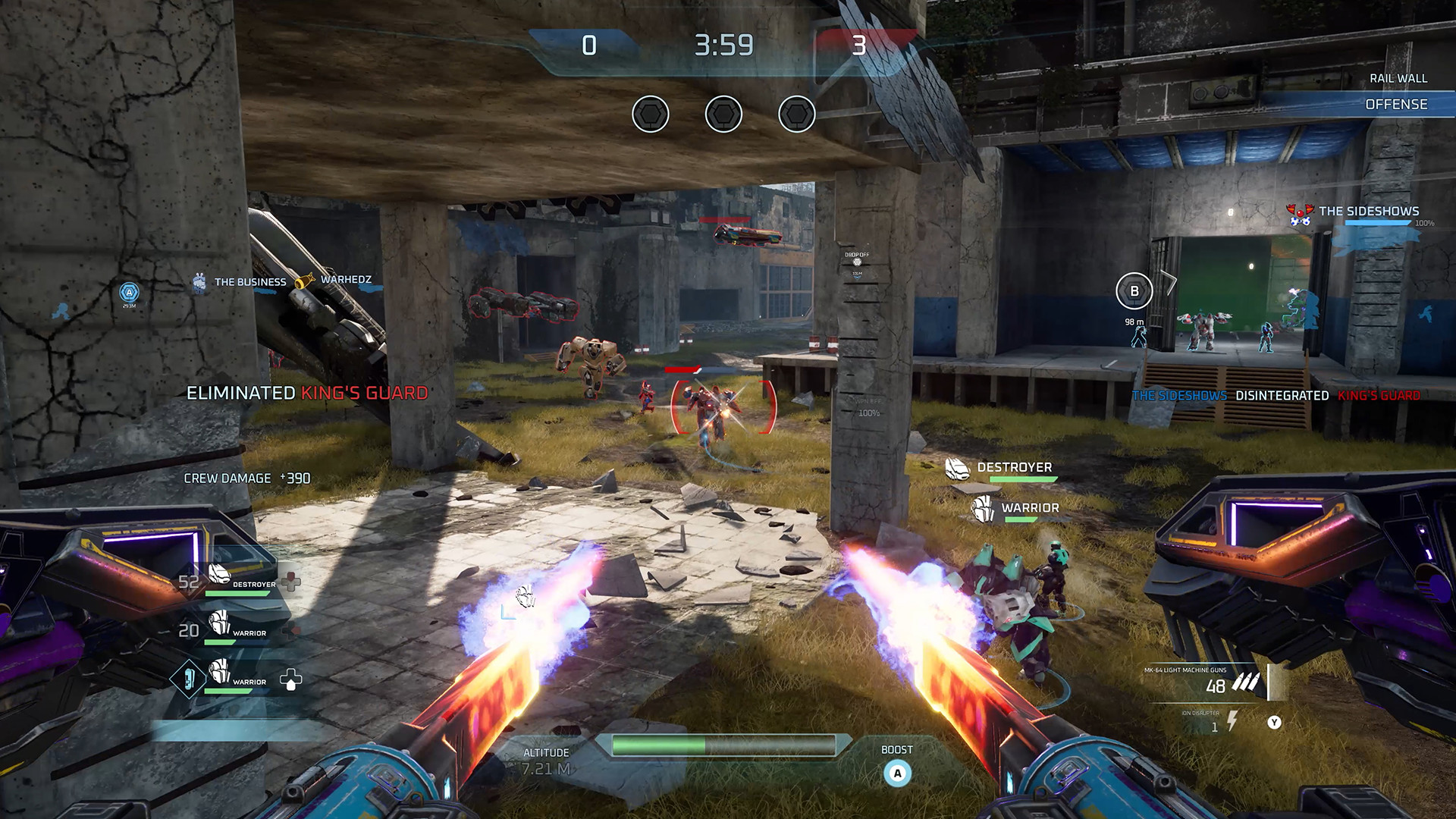
"I'm so excited and proud of the studio, but we're not immune to issues that every studio has"
It might make iteration and direction a little easier, but there must be other challenges associated with working with such a small team?
Marcus Lehto: I'm so excited and proud of the studio, but we're not immune to issues that every studio has. One of my least exciting moments… or the thing I was most disappointed with was when we had two employees – I love them; they were fantastic and super talented – who just never clicked with the game.
And that's to be expected. It's not going to be a game that everybody clicks with... You think that maybe you can turn them around on it but, no, sometimes that's a lost cause. One of the guys wanted to focus on a stylistic, cartoony kind of game. That's what he really wanted in his heart – Disintegration wasn't really in his blood. While he was doing so much great work, it just didn't work out.
That was one of my most disappointing moments, when we had to part ways with. It made me sad because they're such talented people, and they were great to have around.
When you're working with a team of this size, what's the impact of a member of the team leaving?
Marcus Lehto: We made do, of course. When someone leaves a small studio of only 30 people – and we only grew to 30 last year, it's been between 20-25 people during the bulk of development – when one of those people leaves, oh my gosh, that's a big hole to fill.
After one of our effects artists left, suddenly I'm doing all of the effects for the remainder of the game. And that was really hard to do, because I have so many other things I like to do… I mean, I love being an artist and an individual contributor on a game – no doubt about it! But it puts a lot of burden on a handful of people when something like that happens.
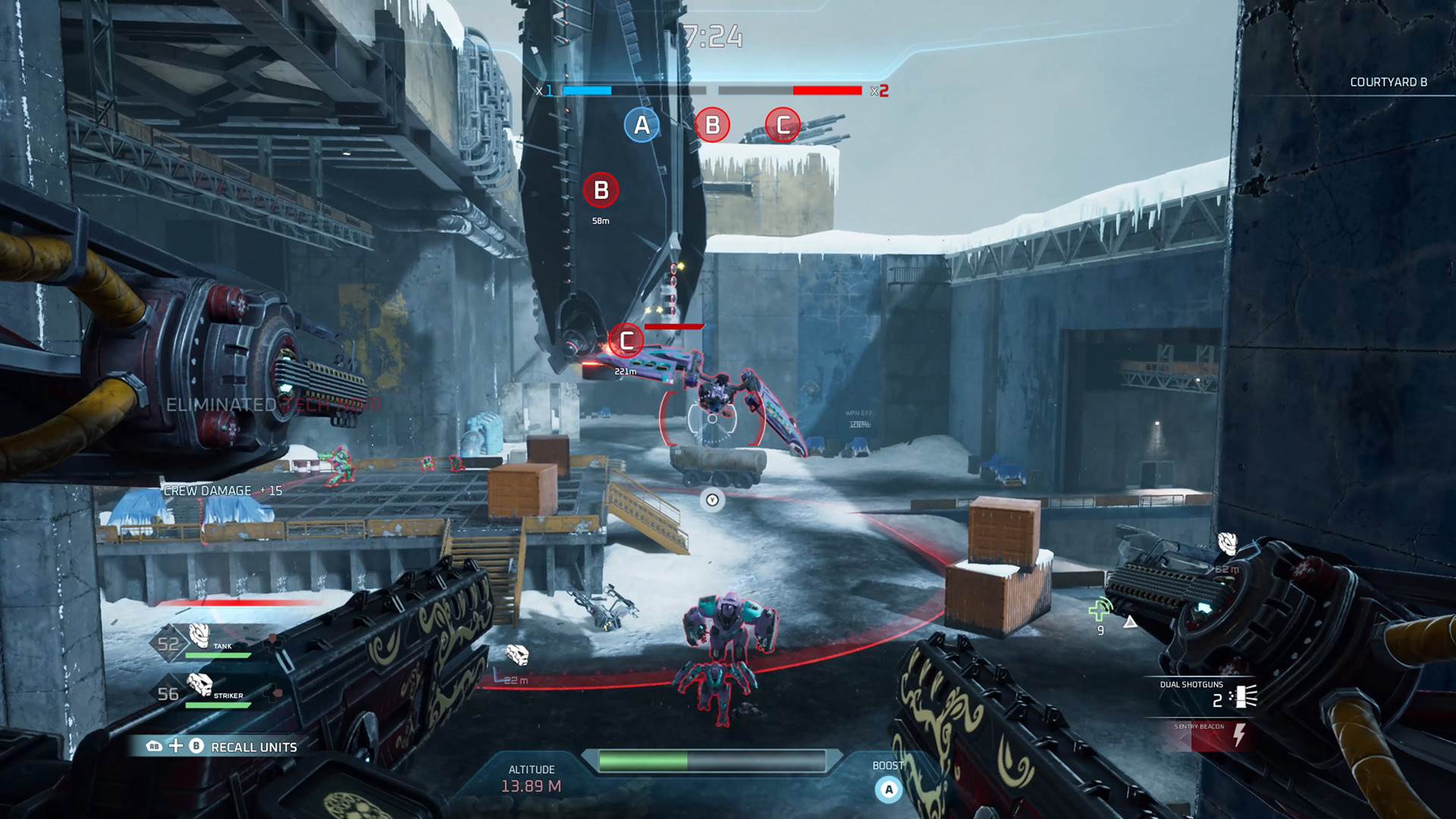
"It's really important to us that we get our fingers greasy in the engine every day, and just have a good time making games together"
I think there's maybe an assumption that once somebody moves up to a creative director of studio owner position, they aren't necessarily getting their hands dirty in the code every day – they're sat in an office somewhere, dealing with a mountain of other problems with production...
Marcus Lehto: [laughs], it's still a lot of hard work! I don't know if it's just because I grew up in the Midwest here in America, or if it's because I came from a family where my dad made about $6000 a year as a preacher and that was it, but we really had to work hard to get through anything in life. I just carry that through in what I do now. And besides, I love making games.
We get to make games; not a lot of people get to say that. It's so much fun to do. That creation process of actually making a game is the most satisfying part of my day. It's important to me to be able to get into the development process with each one of the members of the team and stand toe-to-toe with them. My business partner Mike [Guttman, CTO/VP] is the same way. It's really important to us that we get our fingers greasy in the engine every day, and just have a good time making games together. That's why we're doing this. That's why I started V1 in the first place.
And to be honest with you – not to over-extend this answer, Josh – but at Bungie, we got so big. And when you get big and you have your senior people getting into positions of management – and maybe they should be master craftsmen, but instead they're managing more people – and they're not creating as much anymore.
Part of you just dies inside when that kind of thing happens. That's a real thing I wanted to be careful with – to just get back into the roots of making games with V1. To make sure that people who have been in the industry for many, many years have that opportunity to just, you know, dust off some of the old skills that they still have and to start using them for real.
This interview has been edited and condensed for clarity.
Disintegration is available now for PlayStation 4, Xbox One, and PC.
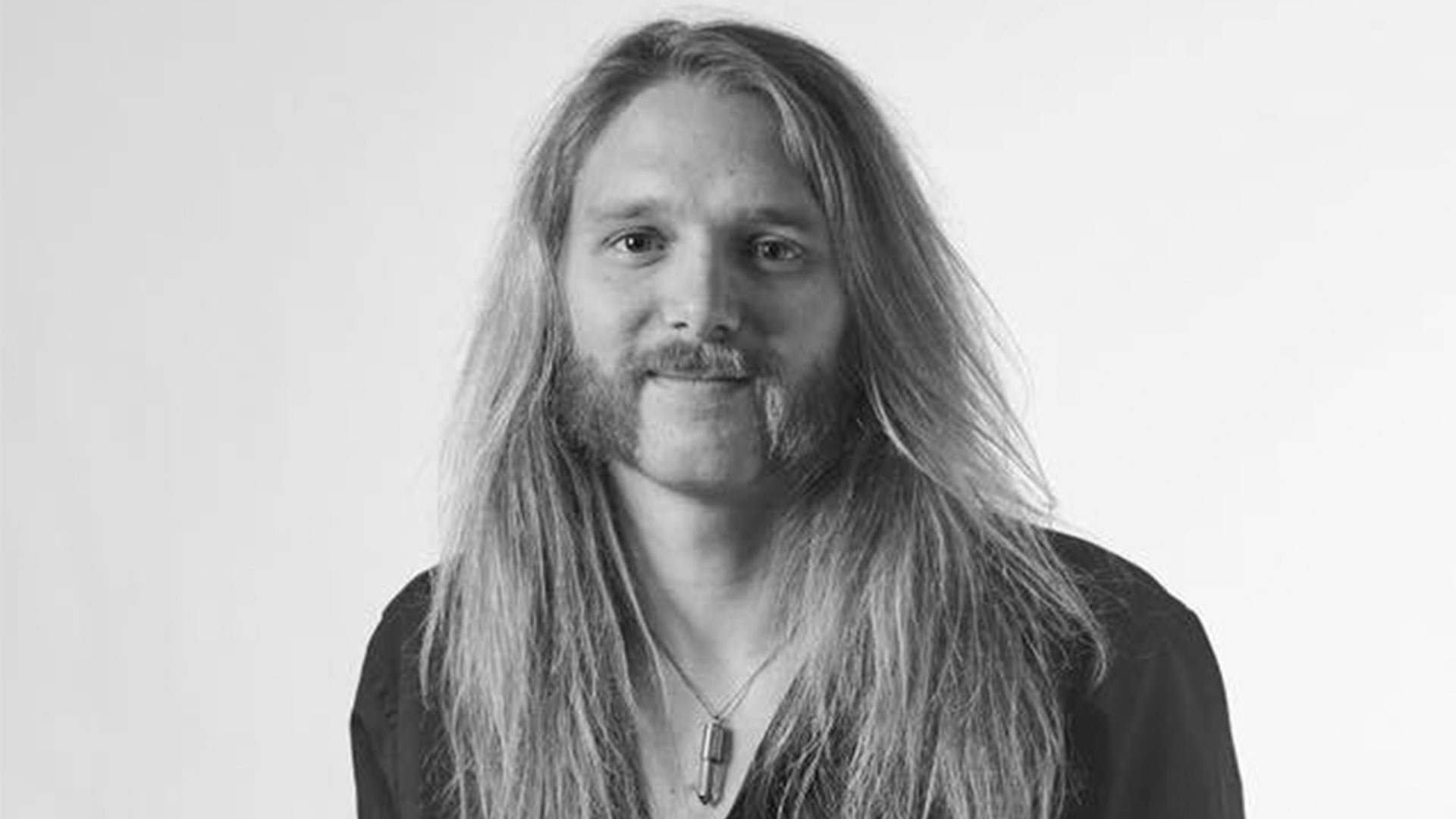
Josh West is the Editor-in-Chief of GamesRadar+. He has over 15 years experience in online and print journalism, and holds a BA (Hons) in Journalism and Feature Writing. Prior to starting his current position, Josh has served as GR+'s Features Editor and Deputy Editor of games™ magazine, and has freelanced for numerous publications including 3D Artist, Edge magazine, iCreate, Metal Hammer, Play, Retro Gamer, and SFX. Additionally, he has appeared on the BBC and ITV to provide expert comment, written for Scholastic books, edited a book for Hachette, and worked as the Assistant Producer of the Future Games Show. In his spare time, Josh likes to play bass guitar and video games. Years ago, he was in a few movies and TV shows that you've definitely seen but will never be able to spot him in.


